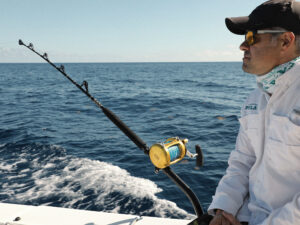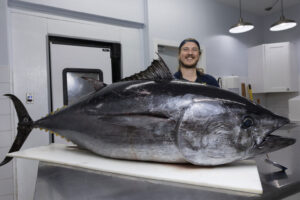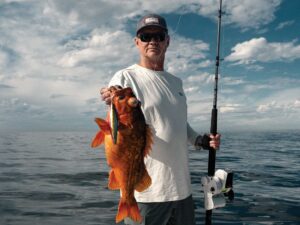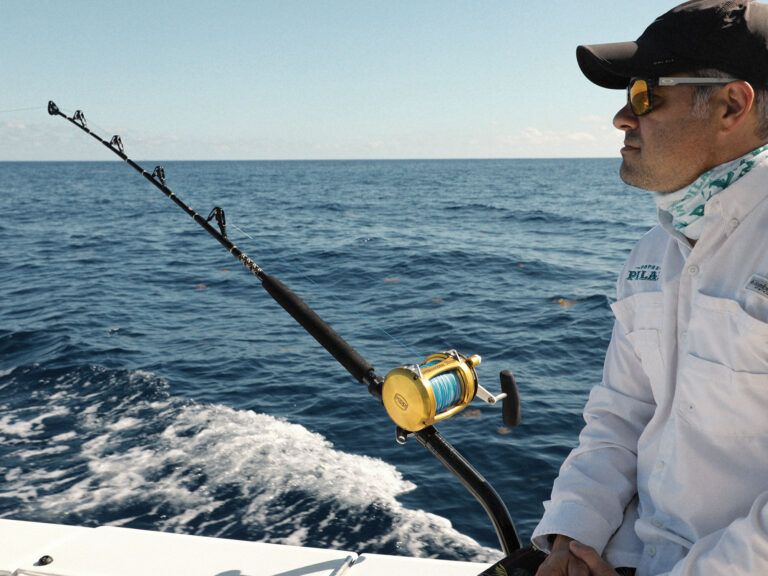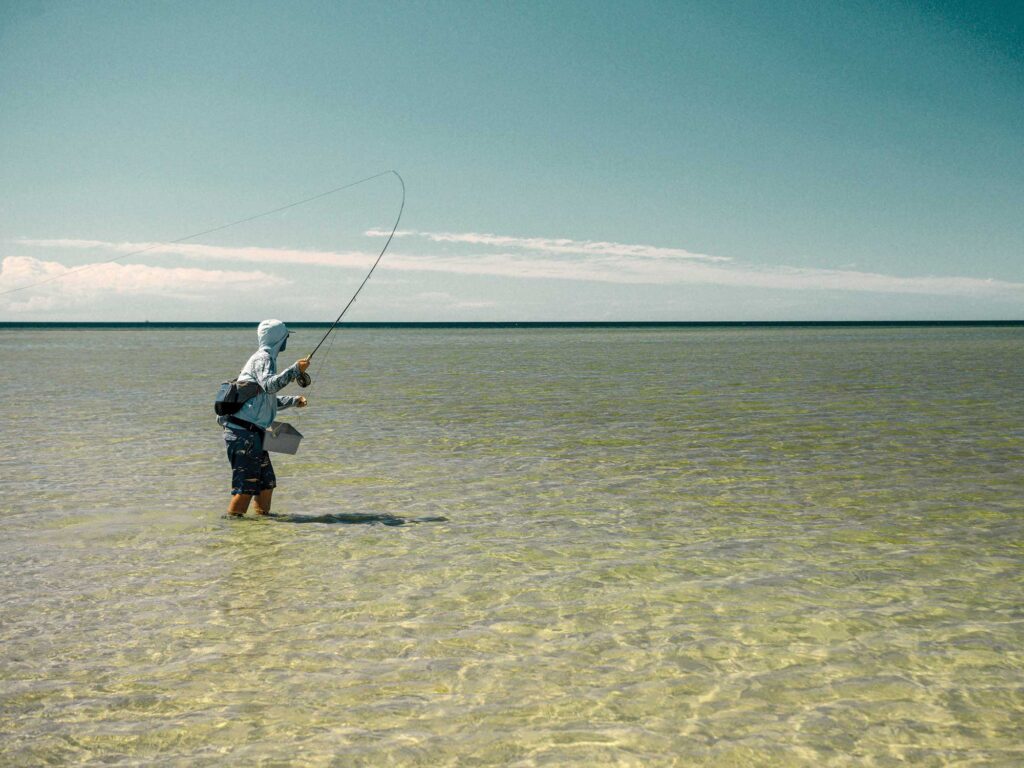
There’s nothing like the excitement of hooking a striped bass.
Methods employed to catch them are many, but regardless of the technique, the hookup and battle are always a thrill. It’s no wonder striped bass represent the runaway favorite inshore gamefish of anglers along the Atlantic Coast.
Since the passage of the Atlantic Striped Bass Conservation Act in 1984, Atlantic striped bass have become one of the most managed gamefish in the world. Congress enacted the legislation at a time when stocks were thought to be on the doorstep of extinction. It created a coordinated federal and state partnership that required coastal states to comply with the striped bass fishery management plans and amendments developed by the Atlantic States Marine Fisheries Commission.
Over the ensuing years, striped bass coastwide stocks have swung from disastrously low to astronomically high and, in more recent years, into another decline. In the last five years, spawning failures and landings of breeding-size fish have led to emergency actions that ratcheted down strict recreational-size and bag limits to protect the last few strong Chesapeake Bay year classes to allow them to join the spawning stock. The current regulations are so strict that anglers must hit a 3-inch slot between 28 and 31 inches to keep a one-fish-per-angler daily limit.
The ASMFC’s Striped Bass Fishery Management Plan is a mind-boggling array of charts, graphs, terms and acronyms. The whole process seems complicated, and that’s coming from someone who served nine years on the Mid-Atlantic Fishery Management Council. For the average angler, one of the plan’s most misleading terms is “overfished.” It seems to imply that fishing mortality is the sole culprit impacting stocks, but scientists actually take into account a wide range of factors that affect the population size to determine if a stock is overfished, and there are many.
Unfortunately, managers have little or no control over most of those stressors, with the exception of fishing mortality, so regardless of why the population is declining, regulating anglers becomes the answer to all problems. It makes anglers look like bad people, even though the overwhelming majority are conservation-minded and quick to accept management’s attempts to protect the fishery.
That said, angling does indeed impact stocks. Recreational landings and release mortality are responsible for greater than 90 percent of the total fishing mortality of striped bass. Keep in mind that commercial fishing has been greatly reduced or eliminated in most coastal states by law.
Under the ASMFC, striped bass are managed as a single coastwide stock, but with a degree of flexibility for individual states to develop regulations within their jurisdictions if they meet or exceed the conservation goals. Certain regulations, like requiring the use of circle hooks when using any type of bait for stripers, cannot be circumvented.
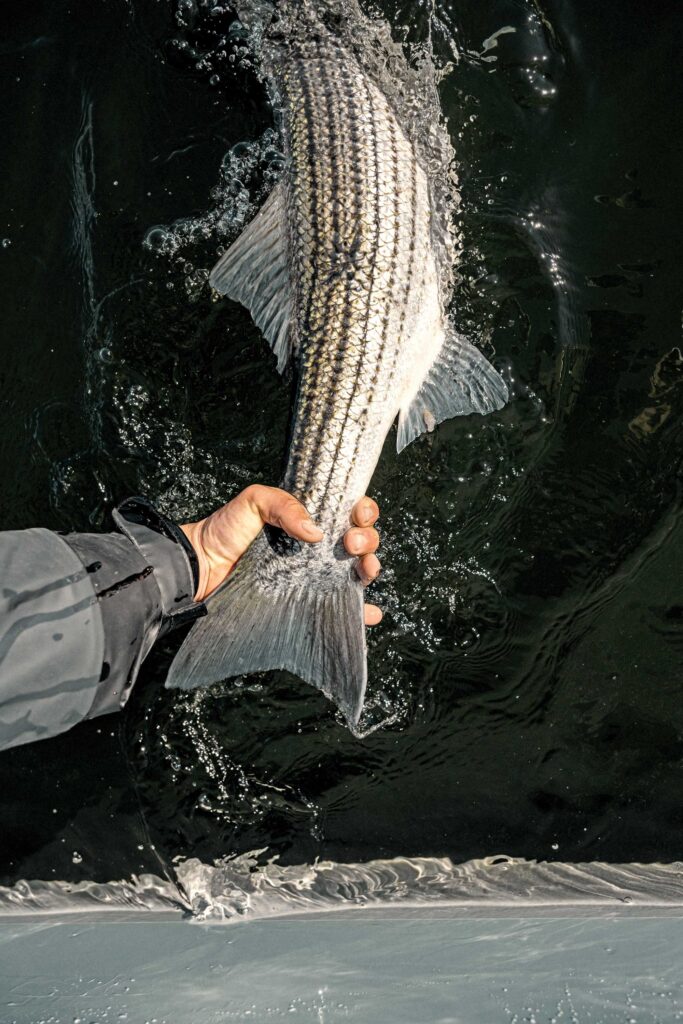
The Role of Biology
Striped bass are anadromous, meaning they live in salt water but spawn in fresh water. They can be found from the Gulf of St. Lawrence to the Gulf of Mexico, although the farther north and south they exist, the less migratory they become. The two major producer areas responsible for the majority of the coastwide stock are the Chesapeake Bay complex (which intermingles with fish that spawn in the Delaware River) and the Hudson River complex.
Chesapeake Bay has historically been responsible for producing upward of 60 percent of the total coastwide stock, while the Hudson River complex produces about half that amount. But scientists are coming to the realization that the ratio might be changing with the warming of ocean and estuarine waters. The Hudson seems to be shouldering the burden of producing a larger portion of coastwide stocks.
After spawning takes place, typically between April and June, striped bass leave the estuaries and undertake a northward ocean migration to summer feeding grounds that can extend as far north as Massachusetts, Maine, and even southern Canada. As waters cool and fall approaches, they migrate back to winter closer to their home estuaries. Some bass will log round trips of more than 1,000 miles annually.
Spawning success is the critical component to maintaining a healthy stock, but for stripers, it is fraught with variables that can make or break entire year classes. Even when the spawning stock biomass of large females is at a low level, a large young-of-the-year index can occur when environmental conditions are ideal. A 40-pound female can produce upward of 4 million eggs annually, but surviving from egg to fingerling size in the first six months after the spawn is becoming increasingly difficult for Chesapeake fish.
Jim Uphoff, a Maryland Department of Natural Resources fisheries biologist and striped bass specialist, conducted a review of the striped bass egg index and juvenile index using data from 1955 through 2019. Both indexes are derived from data collected annually and are used to track reproductive success in Maryland’s portion of Chesapeake Bay. His findings indicate that environmental conditions at the time of and after spawning have a critical impact on young-of-the-year production and therefore future stock size. In his words, “When habitat conditions support the survival of larval bass, and the spawning stock is protected from overfishing, striped bass have the best chance of producing strong year classes.” But first the fertilized eggs must survive long enough to make it to the larval stage.
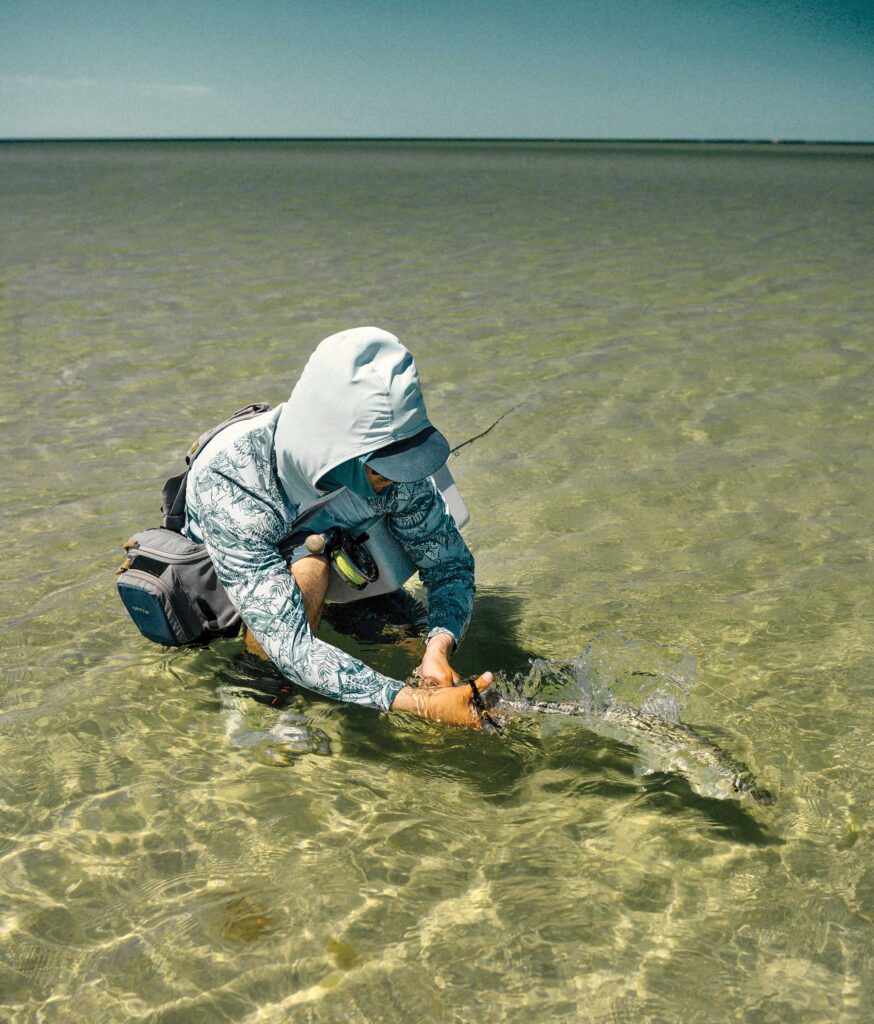
From Egg to Baby Bass
Striped bass typically spawn when water temperatures are between 60 and 69 degrees in open freshwater areas of tidal rivers. A recent study done by Angela Giuliano, also a Maryland DNR fisheries biologist, looked at the effects of water temperatures on the timing and length of the striped bass spawning season and found a correlation between increased water temperatures and an earlier ending of spawning activity and larvae survival.
The first obstacle in the reproductive cycle revolves around the survival of the fertilized egg. A striped bass egg is somewhat buoyant, but will sink without the current flow of the river to help it stay afloat. If current flow isn’t sufficient to accomplish the task for the 36 to 70 hours required for the egg to hatch into a larvae, it will sink to the bottom and die. Recent years have seen reduced or no snowmelt and lower-than-normal spring rainfall, which is hampering both water temperature and current flow, conditions that shorten the spawning season and increase the possibility of eggs coming in contact with the bottom and dying.
Once reaching the larvae stage, the fish will continue to receive sustenance from the attached egg sack for several weeks. As an interesting aside, another study found that the fertilized eggs of older, larger females tend to be more buoyant than those of younger bass, another reason to protect the big breeders.
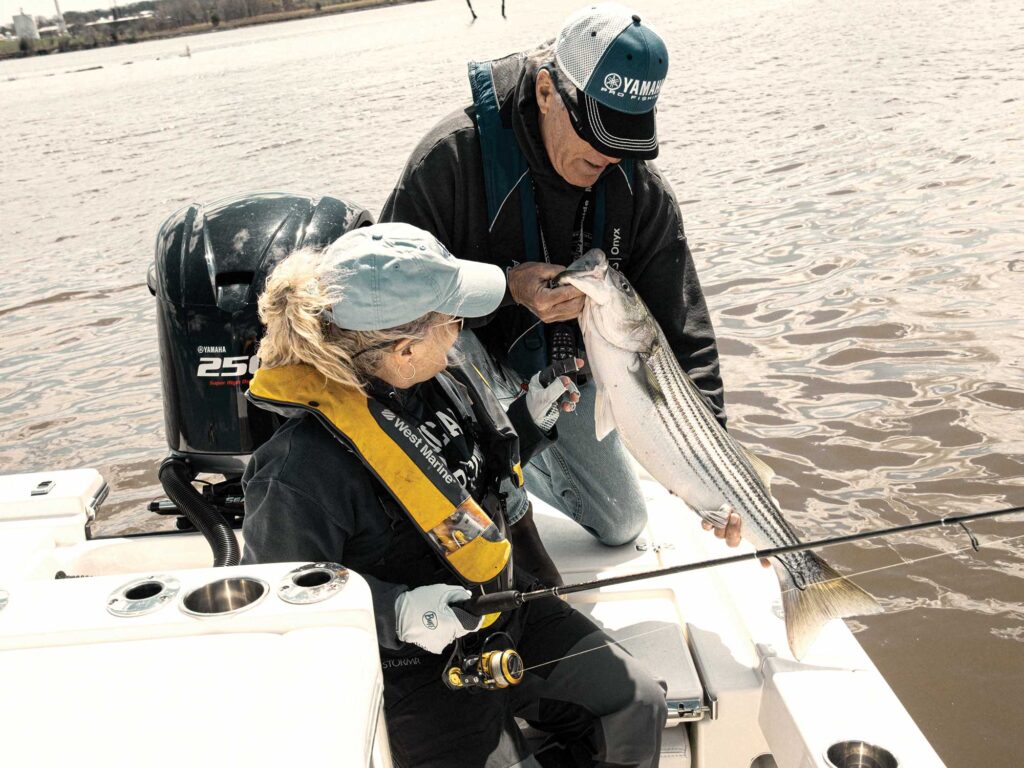
The next environmental obstacle faced by the tiny striper is the presence of an adequate food supply once the yolk sack is absorbed. Environmental conditions like water turbidity, pollution and pH can reduce the presence of microorganisms that the larval bass feed upon. If their food source is lacking, fewer will survive these crucial early stages of life. The issues confronting egg, larvae and fingerling survival are compounded by acidification and chemicals from farm and urban runoff.
One of the most reliable indicators of spawning success in the Chesapeake is the Maryland Juvenile Striped Bass Index, also called the Young-of-the-Year (YOY) Index, which was started in 1954. Over time, the long-term arithmetic mean, as determined by the number of juvenile striped bass caught per tow of a haul seine in specific locations at specific times, has been 11.1. Yet the YOY for the years 2019 through 2022 has remained under 4, with 2023 coming in at a dismal 1. That represents the longest downturn in Chesapeake spawning success since the 1980s, when the stocks were thought to be collapsing.
Read Next: Chasing Striped Bass Through New Jersey Marshes
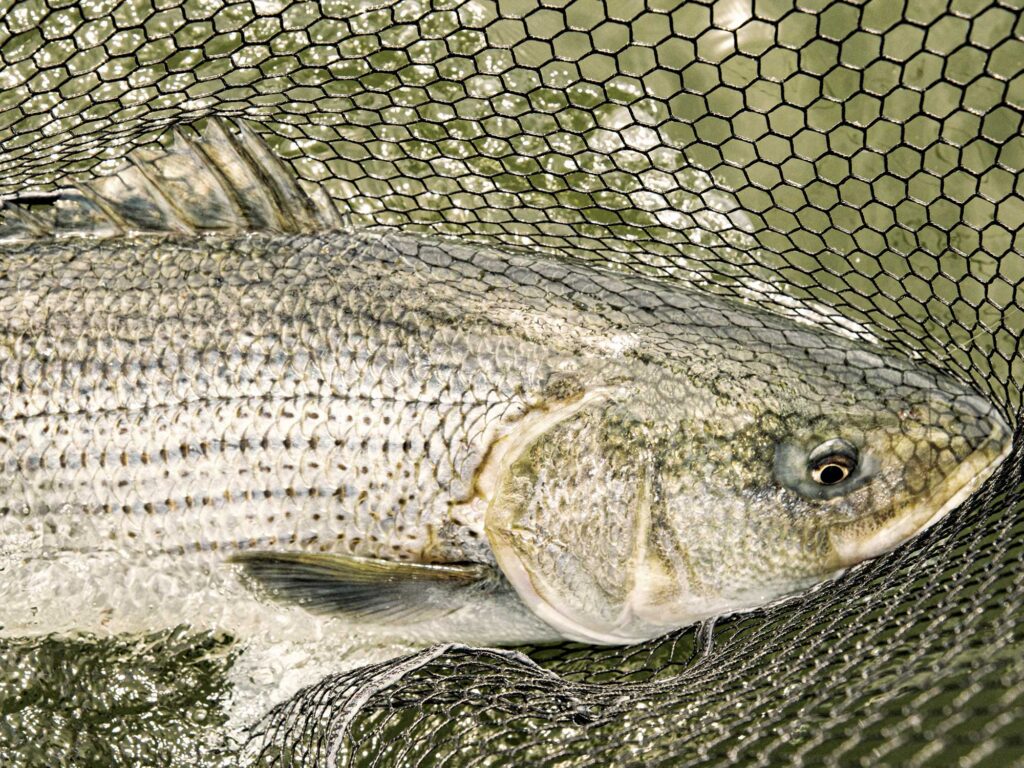
Not All Bad News
One factor that bodes well for the Chesapeake is that the female spawning stock biomass (SSB) has remained high. Those big fish—all bass over 25 pounds are female—are being protected by the current fishing regulations.
There might be another bright spot.
While the Chesapeake has not been contributing to the growth of the coastwide stocks at desired levels, the Hudson complex has produced consistently strong YOY numbers, with the exception of 2023, which was well below average. New Jersey and New York anglers have been the beneficiaries of this success in the form of what many consider the best striped bass fishing the region has ever experienced. What’s more, striped bass of all sizes and year classes appear to be present.
There are also increasing numbers of stripers spawning in rivers farther north, including Canada’s Miramichi River and other coastal rivers of the Maritime provinces.
While all this is taking place, the coastwide angling community has remained understanding and supportive of current recreational fishing regulations. In fact, many anglers go beyond the regulations, releasing all striped bass. The angling community can only hope the managers and the science they use in their decision-making processes will win out in the quest for a healthy striped bass fishery.

